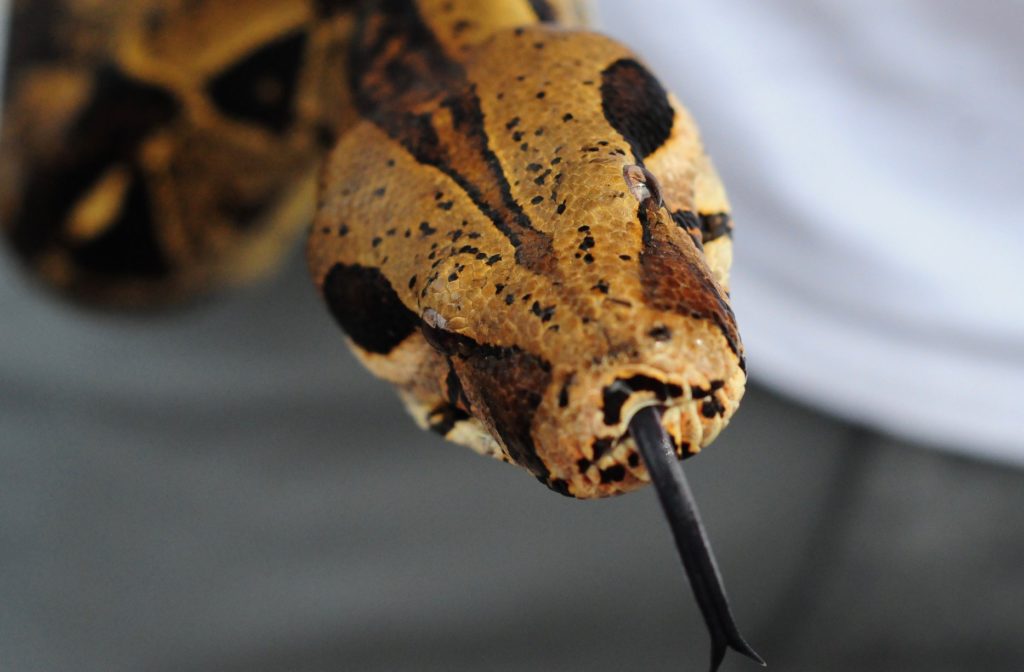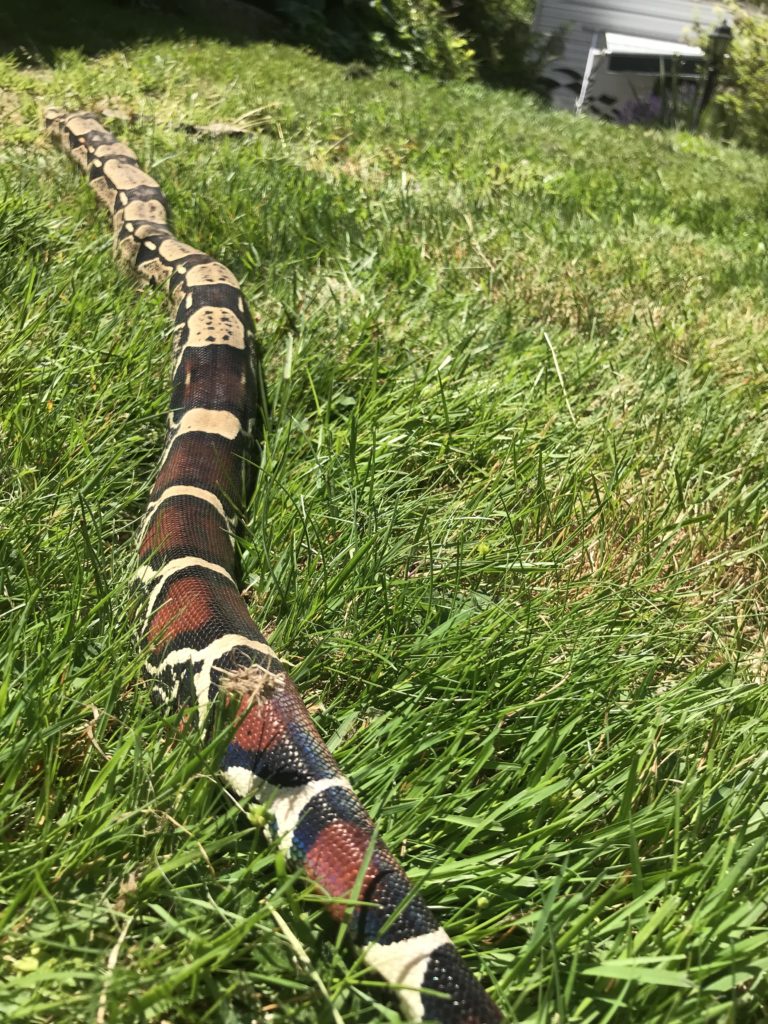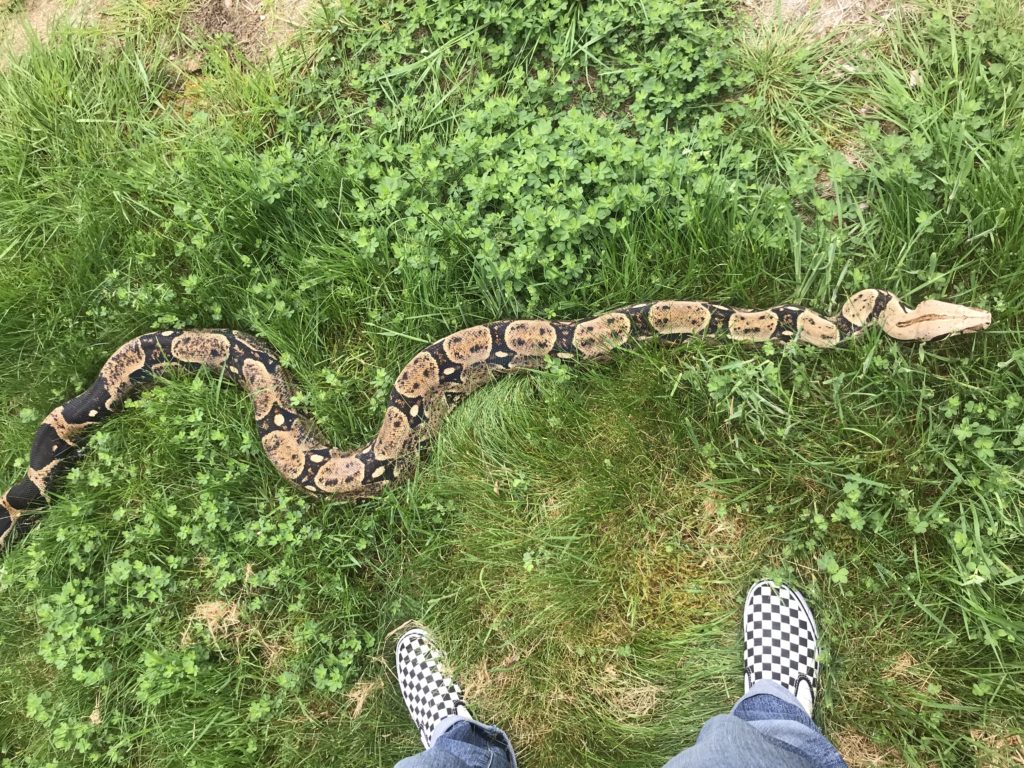
Boa Constrictor Constrictor
BCC or BCI? Don’t let color and saddle shape fool you.
There are several different types of BCC (localities) and they don’t all have the same saddle shape or colors. The Suriname and Guyana bccs are well known for their peaked saddles and brilliant red tails. However the Columbian and Peruvian BCCs do NOT have peaked saddles.
There has been a significant amount of interbreeding between the BCC and BCI in captivity making identification very difficult and pure bloods quite rare. It is our thought that many of the boas that end up in rescue, do so because they have grown too large. Could a heavy dose of BCC blood be the cause for their large size? Most definitely.
Why does this matter? While the BCC tends to be a slow grower it will ultimately get larger than the BCI. An average BCI should stay around 5-8 feet with only the older females reaching that upper end. The BCC does have the ability to grow over 9 feet, and perhaps even larger, if allowed to live to their age potential of 20-30 years. Boas over 8 feet long are actually VERY rare so don’t believe all those people that claim their boas are going to be giants.
We have been going through scale counts to try and discern the difference between BCC and BCI for our boas. Literature reports mid-body scale counts as the more definitive way to identify a BCC.
Most BCC’s will have 80-95 mid body scales (although it seems the Surinames may have less than 80).
BCI’s should have 55-79 mid body scales.
As it turns out, several of Snake Haus’s rescued boas have very high scale counts placing them solidly in the category of BCC. This explains why individuals like our Marion and Elsa are so massive:
Elsa’s mid body scale count is 88 and Marion’s is 86. They are now both over 9 feet long and still growing steadily. Elsa is 11 years old and Marion is estimated to be closer to 20 based on her head size. I wonder just how big these girls will get with that much bcc blood in them.

The photo above shows a Surinam bcc.
Here you see a Columbian bcc. They are quite different!

Interesting yes? We have started our counts with our largest boas and are working our way down. So far most of our biggest boas have more than 80 mid body scales. Makes sense, I suppose, and makes me wonder if this theory will ring true by us finding that the smaller snakes all have less than 80. You’ll just have to wait and see!
It seems to follow, that if you are considering getting a boa constrictor as a pet, you might want to use their mid body scale count as part of your decision of which animal to buy. If you don’t want a giant 10 years from now choose an individual with a mid body scale count in the lower to mid 70’s. Hopefully as we collect more scale counts we will start to see if this might actually be a way to predict adult size.
Click on the animals below to learn about our True Red Tails here at Snake Haus!
Columbian BCC’s
Guyana BCC
Peruvian BCC
Surinam BCC
Mixed BCC/BCI

